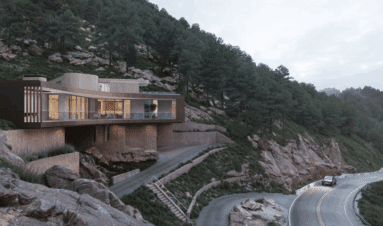Highlands United Methodist Church
3131 Osceola Street
Fast Facts
Architect: Arthur S Wilson
Year Built: 1920
Designation: Denver Landmark Denver Landmark District
Neighborhood: Highlands
Handicap Accessible
No Food or Drink
New DOD Location
HIGHLANDS UNITED METHODIST CHURCH: GOTHIC REVIVAL HIGHLANDS LANDMARK
This is one of many Gothic Revival churches built in Denver in the late 19th and early 20th centuries. Why do you think the style was so popular?
Highlands United Methodist Church, a simplified Gothic Revival building at 32nd and Osceola, has served the neighborhood since its opening in 1922. As the name suggests, it is located in the Highlands neighborhood.
Structure
The present building was designed by architect Arthur S. Wilson and was constructed in three stages: 1922, 1925-1926 and 1950-1951. The second phase, beginning in 1925, included installation of a pipe organ, balcony and choir loft, stained glass windows and tower rooms. The building looks much as it did upon completion of construction in 1926 and has retained a remarkable degree of historic integrity.
The style of the building is simplified gothic revival. The north (front) façade is symmetrical with crenellated, two-story square towers on each corner of the front. The east tower is slightly larger than the west and they differ slightly in buttressing and small decorative brick details. The exterior brick is blonde brick with dark iron spots. The belt courses, sills and buttress caps are white Bedford sandstone (Highlands United Methodist Church Fact Sheet).
Along the east and west side walls of the sanctuary there are three pointed or Gothic arched stained glass memorial windows with simple tracery. The groups or individuals who donated the windows are indicated on the lower window panels. In addition, there are smaller arched windows at the north end of the east elevation, each of which has a single pane of stained glass. At the south end of the east elevation there is a double hung wood window with six panes of stained glass in the upper and lower sashes. In the tower, there are stained glass windows at the second and third floor levels. The windows at the second floor level are rectangular and the windows at the third floor level are Gothic arched windows (Highlands United Methodist Church Fact Sheet).
The building was designated a Denver Landmark in 1998. The designation boundary includes both the building and the surrounding site. The building and parsonage are also incorporated into the Wolff Place Historic District. The historic period of significance for the district includes the years of 1922 through 1926 when the sanctuary incorporating the stained glass windows was completed.
Renovation
The building was constructed as a church and continues to function as such. It is anticipated that the building will continue to be a church and will continue to house the neighborhood groups and organizations currently using the building for the foreseeable future. The church has consistently been a neighborhood anchor by offering necessary programs to meet the needs of the neighbors, as well as being a landmark that inspires the surrounding community. Our congregation has made a commitment to maintain the historic integrity of the church as a role model for the entire neighborhood (Highlands United Methodist Church Fact Sheet).
Wolff Place Historic District
The Wolff Place Historic District was developed in the late 19th century and early 20th century in response to the growing population of Denver and the West Highlands Neighborhood. The district is defined by its distinctive pattern of large corner lots with high style architectural styles framing rows of modest interior lots. The architecture, materials, craftsmanship, scale and design of the district’s buildings correspond with tastes and lifestyles popular during the time of their construction. Most of the houses are constructed of brick atop stone or concrete foundations, although a small number of frame houses are located in the district. The most common architectural styles are Queen Anne, Classic Cottage, Craftsman Bungalow and Denver Square with Classical Revival elements (Wolff Place Historic District Design Guidelines).
Neighborhood
The Highlands is not just one district, but many, and was originally a city in its own right. It was incorporated in 1875. By 1890, Highlands included more than 35 separate subdivisions. The city had high aspirations of its own, touting clean air high above the smoke and industry of Denver, clean artesian water and, most important, clean morals. Although liquor was not forbidden in Highlands, liquor licenses were so expensive that none were issued until well after Prohibition. When Denver was still a dirty, dusty, rambunctious frontier town, devoid of trees and other vegetation, early Highlands settlers were engaged in more civilized pursuits: planting trees and gardens. While Denver was called the Queen City, Highlands was known as the Garden City of the Plains (Potter-Highlands Neighborhood History).
References
Highlands United Methodist Church Fact Sheet.
City and County of Denver. Wolff Place Historic District Design Guidelines.
Denver Public Library. Potter-Highlands Neighborhood History. Retrieved from https://history.denverlibrary.org/potter-highlands-neighborhood-history.
Map
Highlands United Methodist Church
3131 Osceola Street, Denver, CO, USA
Nearby Sites
View All
High, Low, Buffalo
High, Low, Buffalo High, Low, Buffalo creates architecture that stirs souls and elevates everyda...
More Info
Tomecek Studio Architecture
The thoughtful, collaborative and lasting creation of architecture has the ability to impact the ...
More Info